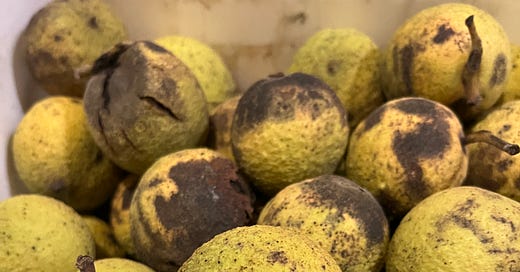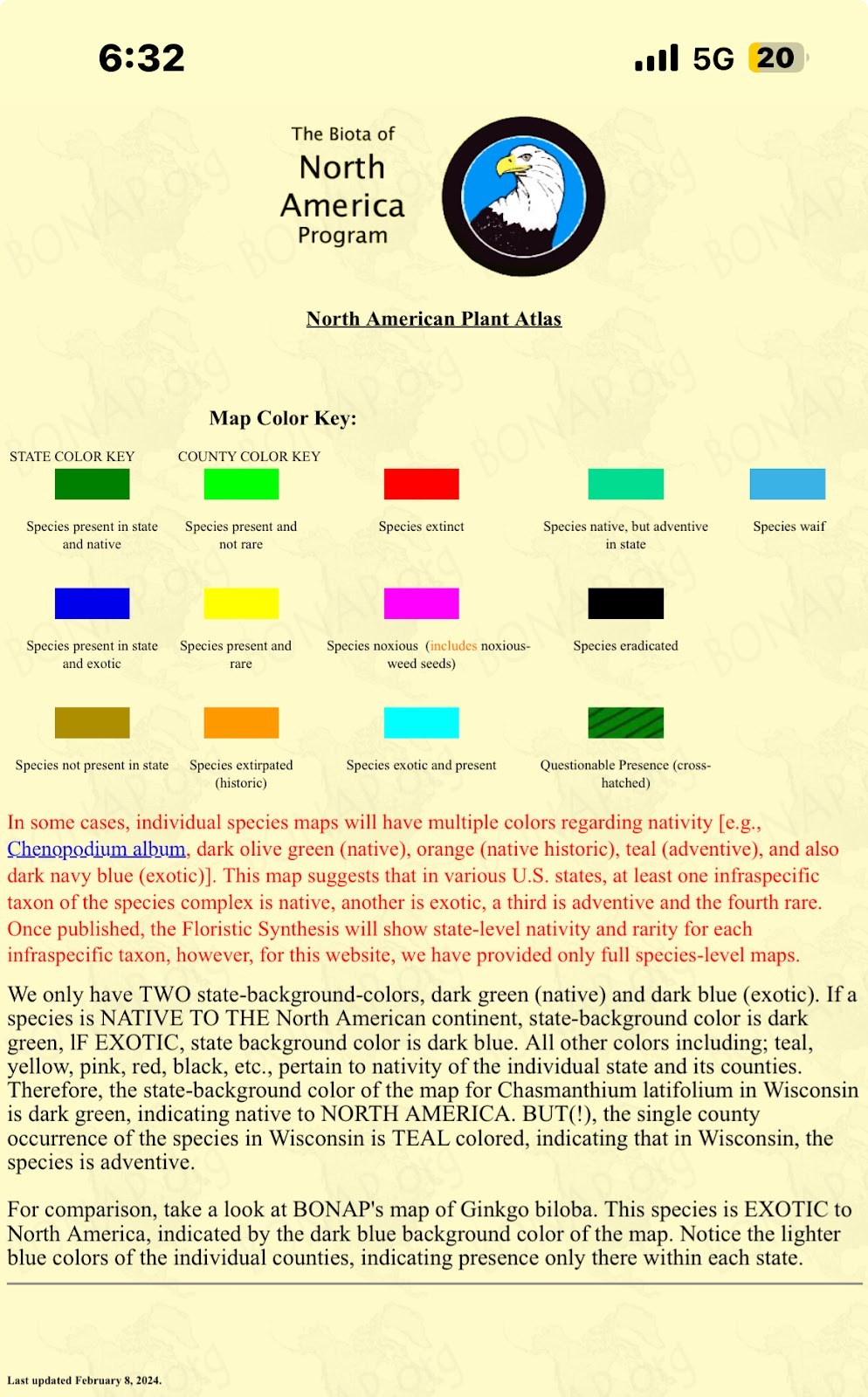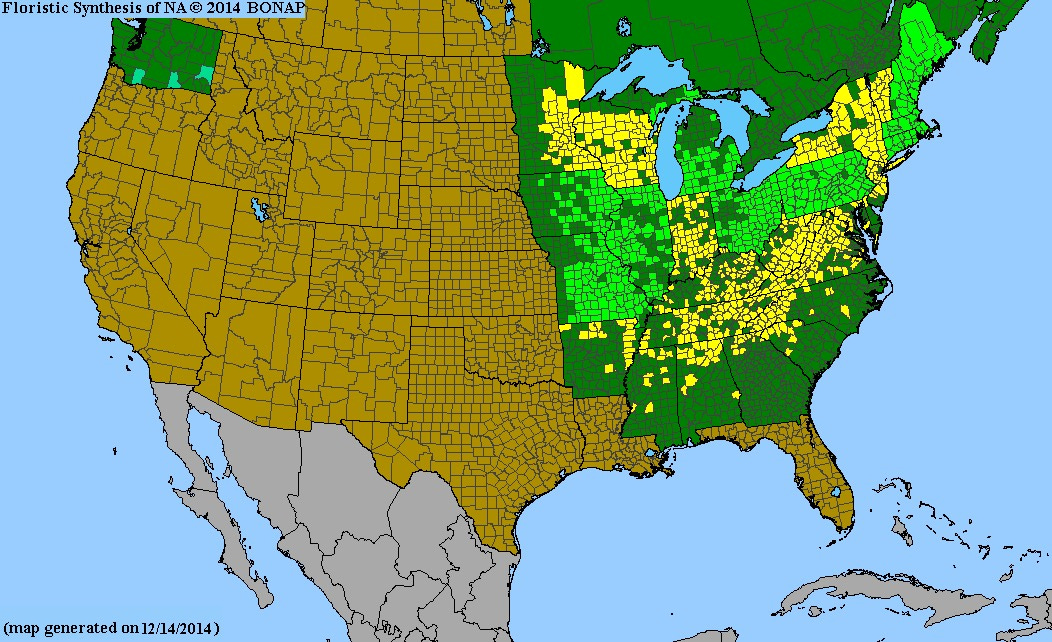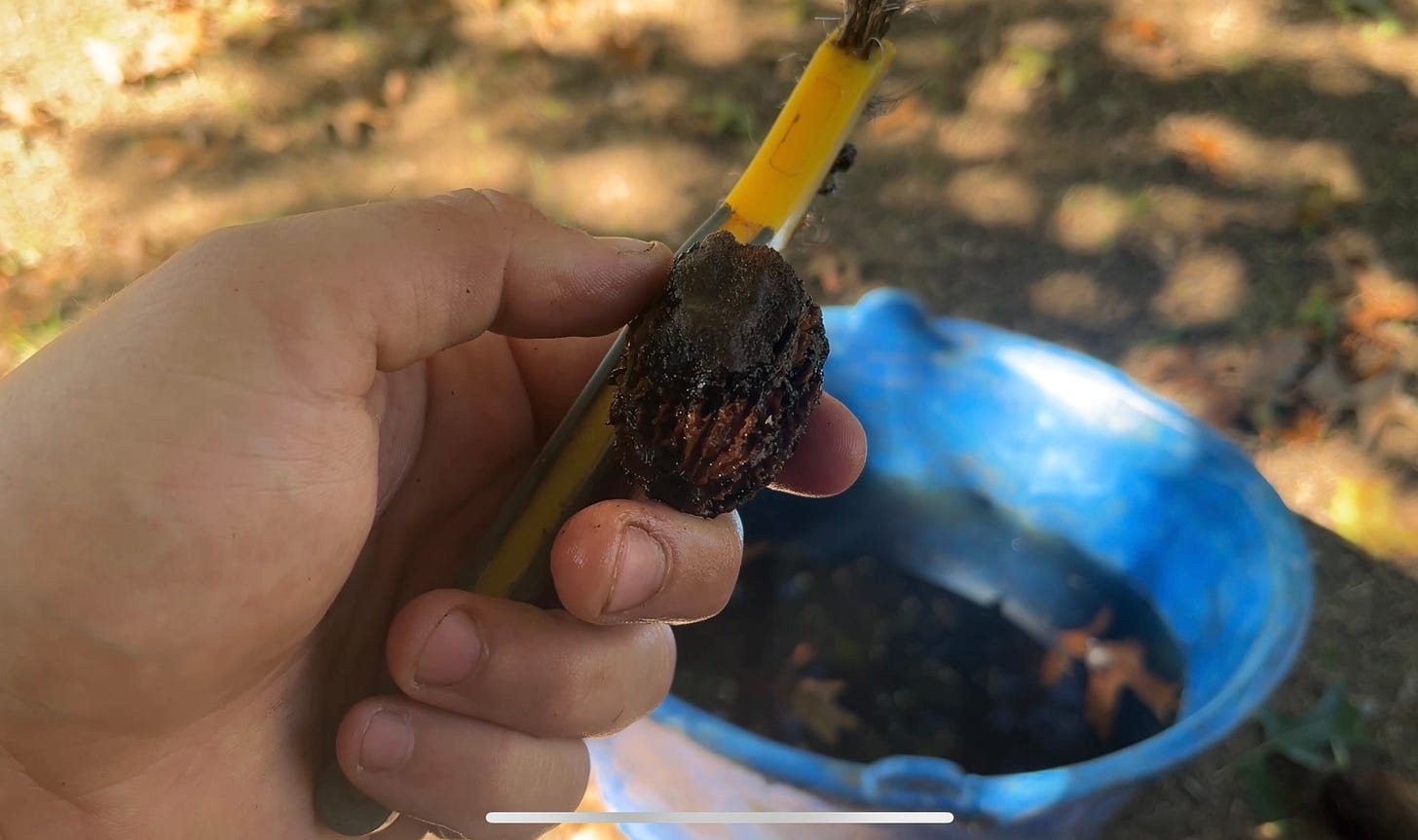Crop Profile: Black Walnut and Butternut (aka white walnut)
Welcome to the first installment of our new series on tree crops! As promised, we’ll delve into plants ideal for our backyard nursery in zone 6b central Kentucky, beginning with the native Juglans species: black walnut and butternut.
Overview: Range Map & Resources
To start, check out this range map showing the natural distribution of black walnut (Juglans nigra) and butternut (Juglans cinerea).
Additionally, I’ve included some helpful links as well as a helpful video from the University of Kentucky forestry and natural resources extension that breaks down the essentials of growing these remarkable species.
Walnut
Tree of the Week: Black Walnut
Butternut
Personal Story & Foraging Notes
Growing up, my experience with black walnuts began as a foraging adventure. I often find myself riding back roads in the fall, scanning for fallen nuts, a ritual that has connected me deeply to my hometown. All you have to do is keep your eyes peeled for where the road is stained black from September-October.
This year was tough for walnuts, but I managed to find some trees that defied the odds and produced well in the midst of a wicked drought.
Finding butternuts has been quite a bit more challenging. Their rarity in my region adds to the thrill of the search, but I’m also conscious of their decline due to canker diseases. Because of this decline, I feel drawn toward searching for trees free of disease in an attempt to further expand their genetics.
My conversations with Nick from Living Soil Tree Farm have solidified my passion for working with these species. He shared with me stories he’s been told of black walnut trees so easy to crack you could almost do it with your hand—what a goal!
Future Aspirations
My vision is to cultivate a diverse selection of black walnut cultivars and their subsequent seedlings while also focusing on selecting butternuts for disease resistance and seed production.
I’m committed to using the best genetics available and plan to connect with Cliff England at his nursery for insights on superior cultivars as well as Scion wood. It’s crucial to start with strong genetics to ensure the success of this project.
I eventually plan to have land. Some sort of acreage to plant a number of improved cultivar crops on. At which point I would begin to select for traits that I find desirable.
To quote Buzz Ferver of perfect circle farm “I hope to stand on the shoulders of the giants that came before me” by selecting toward black walnut and butternut cultivars that are as suitable commercially as the English and Persian walnut varieties made available today.
Cultivation Details
Growing Zones
Black Walnut: Zones 4-9
Butternut: Zones 3-7
Propagation Methods
Currently, I’m focusing on seed propagation obtained from Cliff’s site. I may also venture into ordering seed from Buzz Ferver @perfectcircle.farm in the future as well as transitioning to grafting premium genetics soon.
Available Cultivars
Black Walnut:
S-147
Stabler
Clermont
Thomas
Sauber #1
Myers
Purdue #1
VanderSloot
Emma K
Rupert
Butternut:
Deeters butternut x Black Walnut cross
Kenworthy butternut
You can find scionwood for many of these cultivars at Cliff England's Orchard & Nursery.
Resources for Further Reading
Recipe Ideas
I also really like to cook and to be frank, if I’m not excited about a recipe using the ingredient, it’s likely that I won’t use it after all. So here’s a few ways you can gey creative with these black walnut-inspired recipes:
Black Walnut Pie
Walnut Goat Cheese Salad
Walnut Syrup/Sugar
Natural Dye from Walnut Hulls
Invitation for Feedback
So that’s the first installment of the crop profile series. As we dive in, your input is invaluable! Please comment with any additional information you’d like to see covered in next week’s newsletter. Next week we will be going over my favorite of the native nut trees: the hickory group: shagbark, shellbark, yellowbud and pecan.
PS: Thank you for your continued support as I navigate this journey. This newsletter serves as my personal accountability tool while I work toward establishing a full-time plant nursery by 2027.









Love these black walnuts. Beyond the food I've been attempting to tap to make syrup and am going to try my hand at making Nocino early next summer! Plus, a beautiful wood. The smell of the green husks brings on some serious nostalgia from my time in the woods as a kid. Great read man!